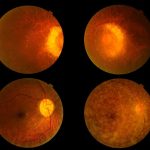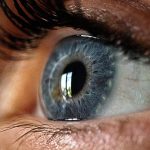If you live long enough, there’s a good chance you’ll get cataracts. Your risk for developing cataracts increases as you age, beginning around age 40. By age 65, more than 90% of the population will have at least one cataract, though it may or may not be affecting their vision.
Yes, that’s right. You can have a cataract developing in one or both eyes, but it may not yet be affecting your vision. Your eye doctor will monitor the cataract and advise you when it’s time to have a procedure to address the condition.
What signs will I notice if I’m developing cataracts?
Some people function well with very little vision loss in the early stages of cataracts, while others may notice significant vision loss and need to have them corrected.
Here are 5 signs that you’re developing cataracts:
- Increased Glare
A cataract is an opaque growth on the lens of your eye. Before cataracts develop, your eye’s natural lens is transparent so that light can go through it. The cataract blocks light from going through the lens, causing light to scatter around the eye. This leads to increased glare and light sensitivity. Patients with cataracts often notice this phenomenon and tell us that they’re much more sensitive to light because of the condition. That’s one good reason to move forward with your cataract procedure.
- Blurred or Double Vision
The cataract in your eye’s lens blocks a portion of the light moving through the eye and can cause blurred, distorted or double vision. You may first notice that you can’t see very clearly at a distance, but eventually, as the cataract continues to grow, you may not be able to read street signs when driving or see well enough to read or watch television. When the condition affects your lifestyle and you have a lower quality of life, it’s time to schedule your procedure.
- Not Able To See Well at Night
For many cataract patients, the first vision change they notice is that it becomes more challenging to drive at night. That’s a dangerous aspect of the condition!
Cataracts make it harder for your eyes to focus and see your best at night. Other activities can become more difficult at night, including reading, sewing or other close work. If you do not see as well as you’d like to see at night, that’s another sign it could be time for you to have your vision corrected.
- Color Recognition
Here’s a story we often share (with permission) about one of our cataract patients: The morning of his cataract procedure, he noticed that his wife was wearing a rust-colored sweater. Later, after his cataract procedure, he noticed that she had changed into a bright pink sweater. When he commented on her new sweater, his wife said, “I didn’t change clothes―this is the same sweater I was wearing earlier.”
And yet—according to his color perception before and after the cataract procedure—it seemed like the color changed from rust to bright pink. What a difference! That’s how amazingly different color recognition may be due to cataracts. Because the cataract growth itself is cloudy and yellow, it distorts your color perception. Bright colors may look dull, brownish or yellow.
While this may not impact your daily life, it’s a telltale sign that cataracts are affecting your vision.
- Light Halos
Halos are bright circles that surround light sources—such as oncoming car headlights. While angels wear their halos on purpose, you shouldn’t see halos around lights otherwise. However, because cataracts may block a portion of the light going into your eye, they can cause you to see halos. Cataract patients often see halos at night around streetlights or the oncoming headlights of cars. When you combine halos with the difficulty cataracts often cause with night vision, it can make you feel unsafe driving after dark. That’s a significant quality of life issue that can be solved by having a corrective cataract procedure.
Make an Appointment With Your Optometrist
Your optometrist can diagnose cataracts during your annual comprehensive eye exam. He or she may have mentioned that you are developing cataracts in one or both eyes. If you experience any of the above changes or vision distortions, these are signs that the time for your cataract procedure is nearing.
Make an appointment with your eye doctor to discuss vision changes, and he or she will recommend the next steps to take to have your cataracts corrected. The procedure has an extremely high 98% success rate, and is performed on an outpatient basis.
Fortunately, cataracts are one of the few age-related conditions that can be corrected with minimal interruption to your schedule. You’ll be seeing as clearly as you used to see 20 years ago in just a few days!






